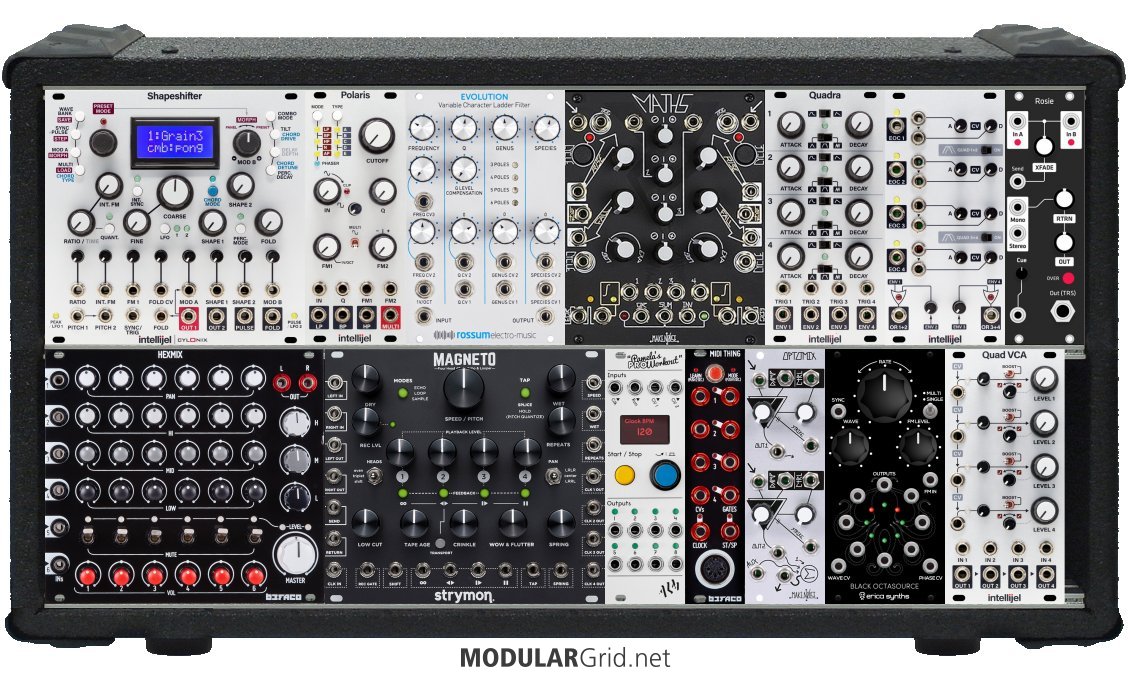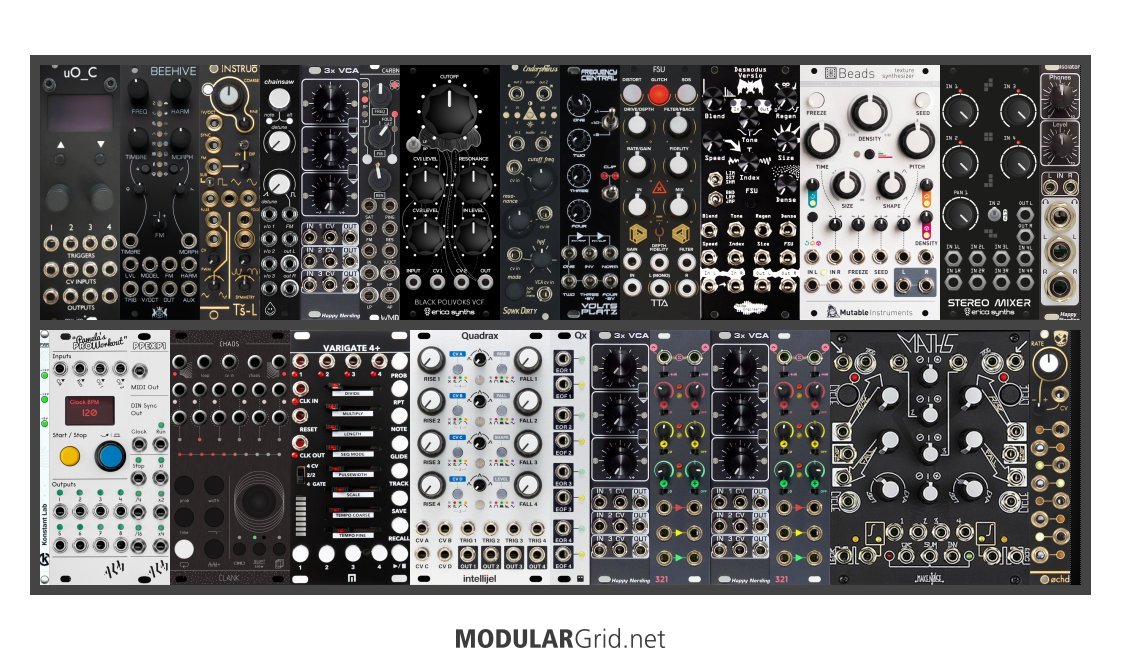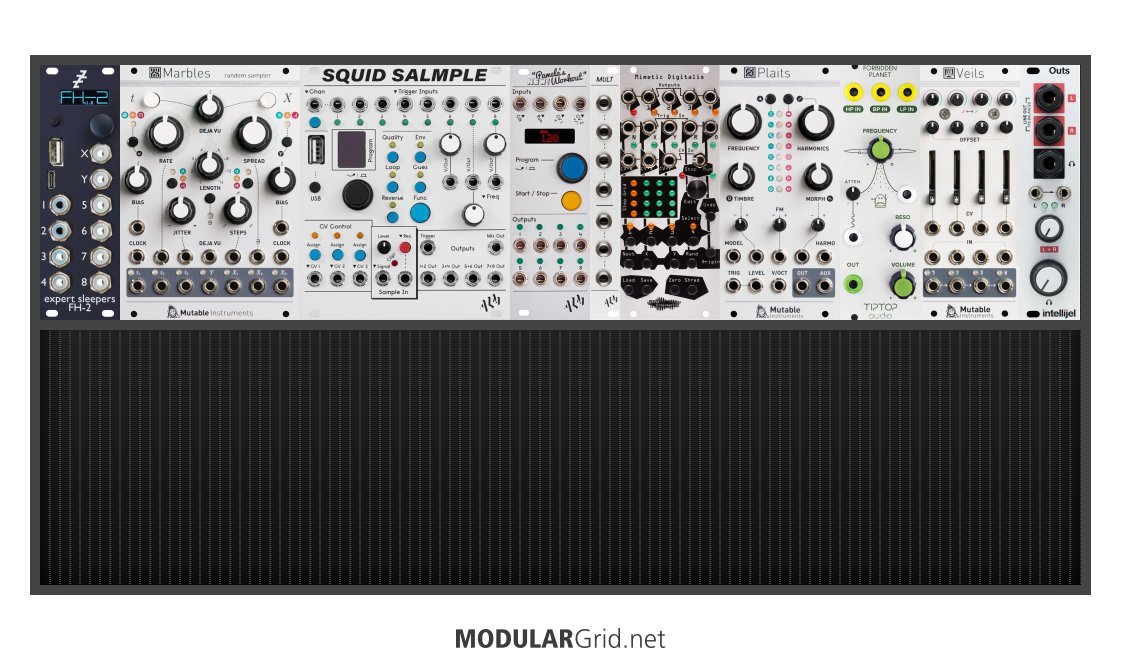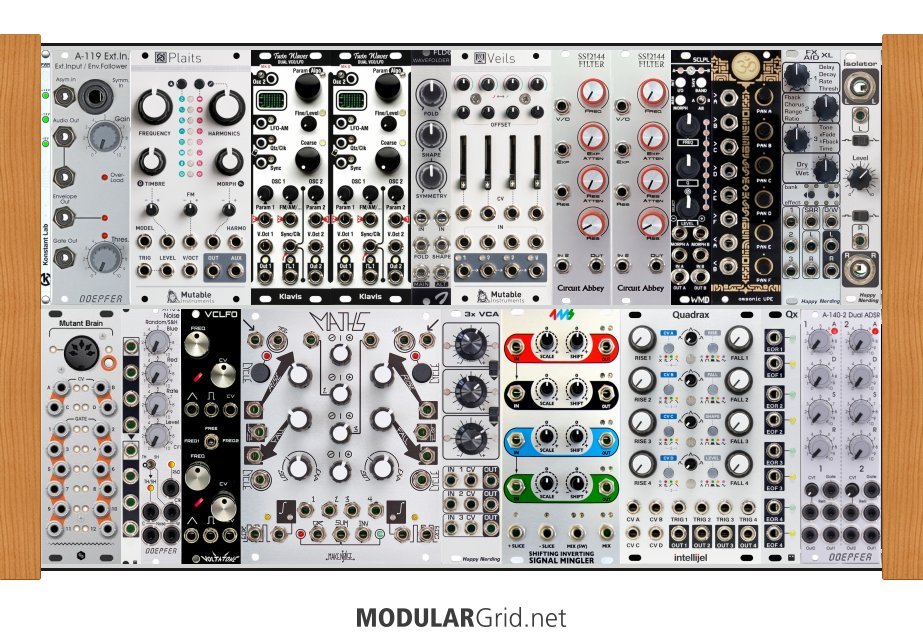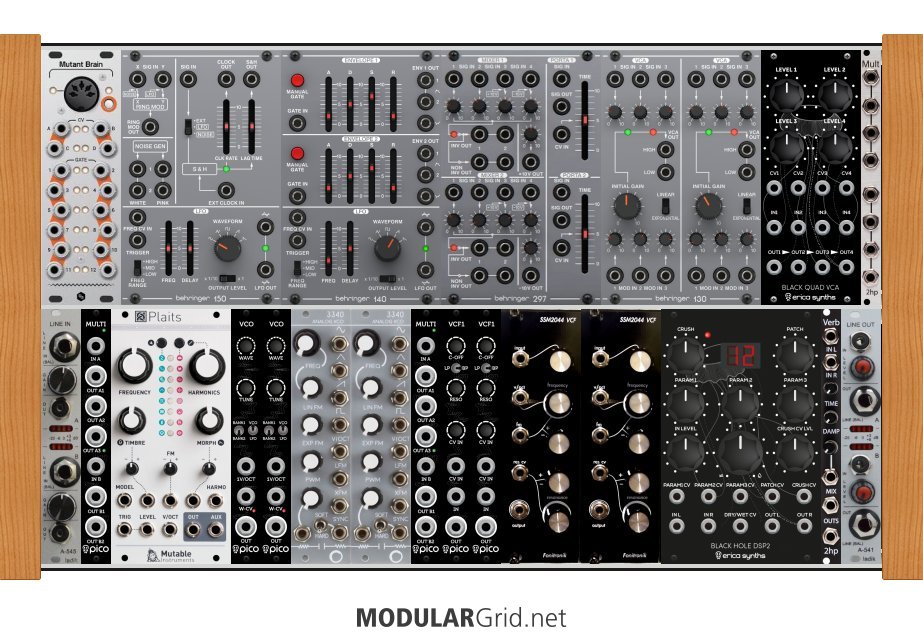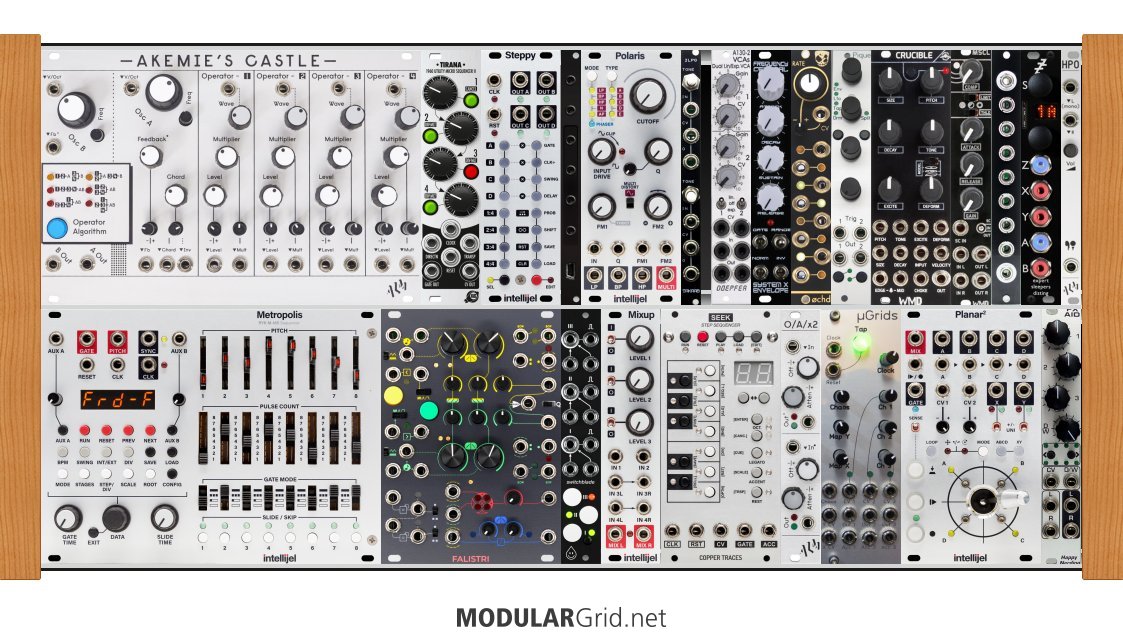Thanks for all the insightful replies so far, I appreciate it! I'll respond to some of your points below:
The FH2 is probably an overkill unless you plan on hooking this system up directly to a computer. You could save a lot by using a simpler interface.
-- Ronin1973
What would you suggest as an alternative? I was originally looking at the Intellijel uMidi. Would it be better to just get that instead? I guess the idea would be to use the both rack standalone and also sequenced by the DT/DN.
I'd add a micro Ornament & Crime unit to this (8HP). It has a quad quantizer mode that makes getting really nice, in tune notes out of the Mimetic. O&C has other functions as well, so it'll be very handy.
-- Ronin1973
Thanks for the suggestion. I've seen this mentioned quite a bit so will do some research into this.
Your rack has no LFOs, no dedicated envelope generators, no utility mixers, no basic utilities (like attenuverters, noise). You'll find the boring utilities are the glue that really holds your modular system together.
-- Ronin1973
My next module would probably be Maths, but figured I could get away with it as the 0-Coast has half of one. Alternatively, what utilities would you recommend to start off with in a small system like the one I've proposed? Something like MI Links perhaps?
Also a small multi-effects unit can make a real difference. You may want to try an Expert Sleepers Disting EX if there's room. It's a Swiss Army Knife of functionality and will help you explore the possibilities of modular synths.
-- Ronin1973
Again, another module I've seen recommended a tonne. I've heard there's a lot of menu diving and programming though, which I'd prefer to avoid. Would something like an FX Aid XL or an Erica Synths Dual FX work instead for more hands on control instead?
I'd look to the sinfonion - then you can do chords too!!!
-- JimHowell1970
Thanks for the suggestion. I haven't seen this before but will check it out! Someone else also recommended a Qu-Bit Chords so will check them out for sure.
modular synthesizers that don't have utilities end up unloved in cupboards or for sale once the user gets bored of them
-- JimHowell1970
Seems like this is a common piece of advice thrown around. See my above response to Ronin re utilities.
also consider the happy nerding fx aid (xl) if you want a lot of variety
-- JimHowell1970
I think I prefer the FX Aid XL as it seems to be no menu diving or programming compared to the Disting. Will do more research into it.
The Digitakt and Digitone can output DIN Sync, so you just need the $10 cable from ALM to get clock/run into PNW. If you want to sequence your modular from the Elektron boxes, you'll need MIDI to CV (the 0-coast has some capability, though it is a nuisance to use). If you want to go the other way (say, to get Euclidean rhythms driving the Digitakt), you'll want something with CV->MIDI capabilities, for which there are fewer options (but some exist).
-- plragde
Good to know, I didn't really think of those other use cases. I think for now I'd like to use the rack both as a standalone unit but also sequenced via the DT. Would definitely like to explore Euclidean rhythms driving the Digitakt down the line though, so will have a look into this in the future.
I don't think you should base your rack on a video made by someone for whom this is just a fraction of their collection.
-- plragde
I totally agree with these comments, however from what I've seen, those modules seem to be the only ones the guy was using. In his later videos you can actually see him expanding his rack, so I doubt he has a bigger collection stored elsewhere - that's why I made the exception that maybe I could imitate this system while starting as it looks like he can do so much already with those limited modules, which would probably keep me busy for a long time while figuring out what else to add down the line.

